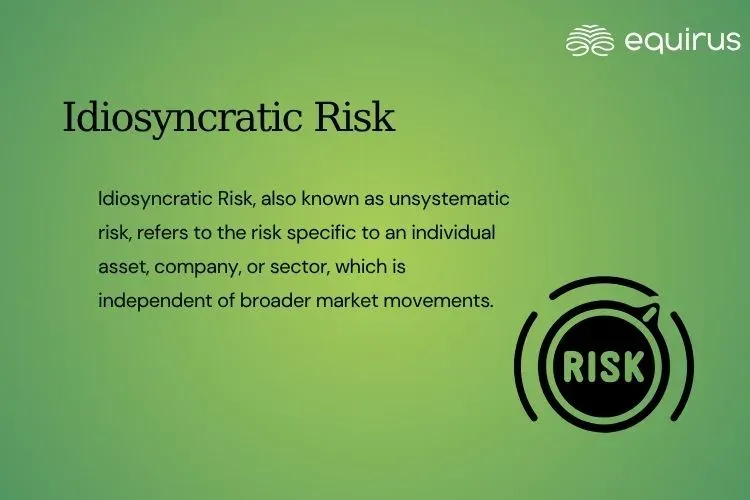Idiosyncratic Risk

Key Highlights
-
Idiosyncratic Risk, also known as unsystematic risk, refers to the risk specific to an individual asset, company, or sector, which is independent of broader market movements.
-
Key factors includes company-specific factors, industry-specific factors and event-driven triggers.
What is Idiosyncratic Risk?
Idiosyncratic Risk, also known as unsystematic risk, refers to the risk specific to an individual asset, company, or sector, which is independent of broader market movements. Unlike systematic risk, which affects the entire market, idiosyncratic risk arises from factors unique to the entity or industry, such as management decisions, operational issues, regulatory changes, or competitive dynamics.
Key Factors
-
Company-Specific Factors: Business strategy, product launches, leadership changes, or operational disruptions.
-
Industry-Specific Factors: Regulatory shifts, sectoral demand fluctuations, or technological disruptions impacting a particular industry.
-
Event-Driven Triggers: Mergers, acquisitions, legal disputes, or product recalls.
Impact on Portfolios
-
Volatility: Concentrated exposure to a single company or sector increases portfolio volatility.
-
Potential Losses: Unexpected events affecting one company can significantly impact investment returns if not diversified.
-
Risk Management: Diversification across multiple securities, sectors, and geographies is the primary method to mitigate idiosyncratic risk.
Applications of Idiosyncratic Risk
-
Equity Selection: Analysts consider idiosyncratic risk when valuing individual stocks.
-
Portfolio Construction: Helps fund managers design well-diversified portfolios to reduce unsystematic risk.
-
Credit Analysis: In debt markets, idiosyncratic risk is assessed for default probability of specific issuers.
